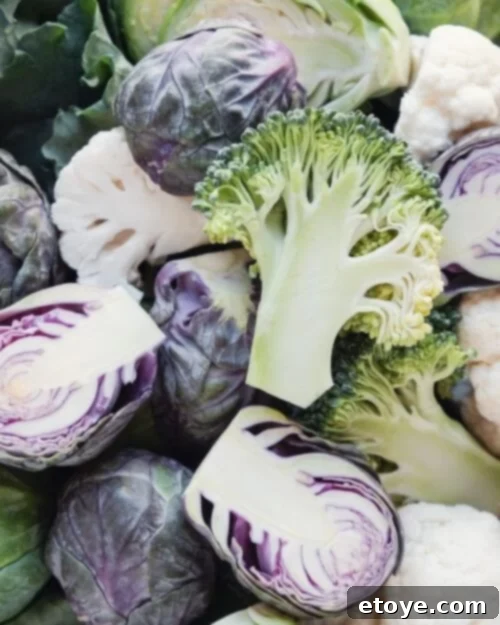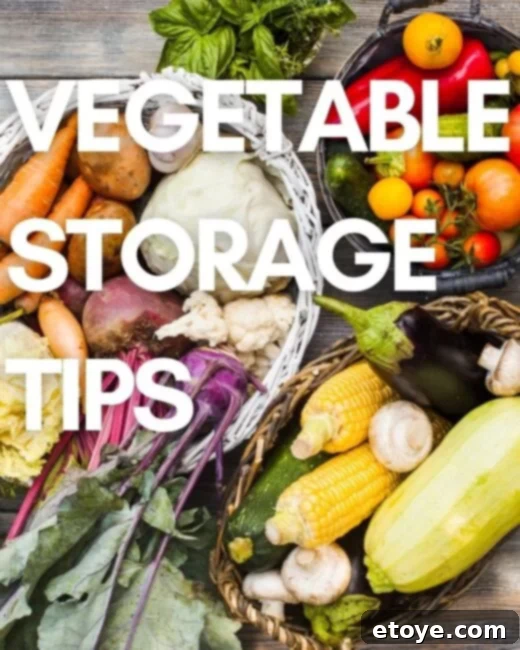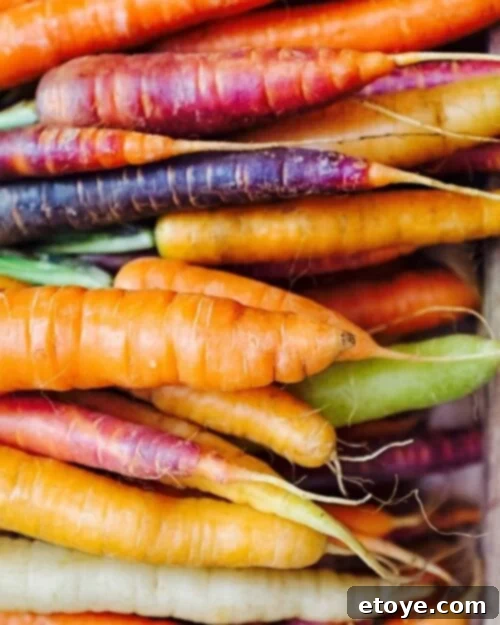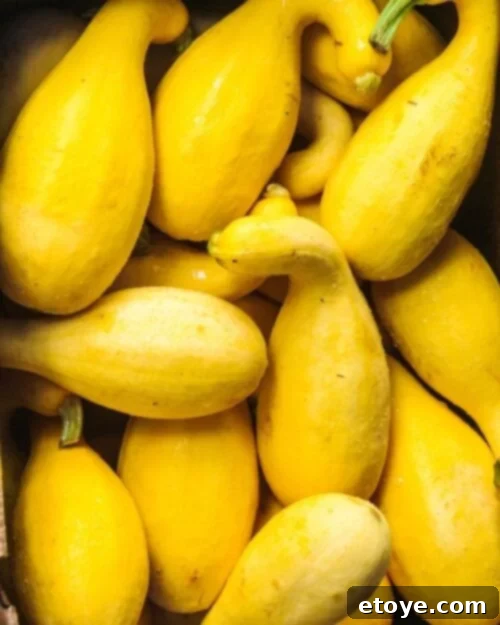Food waste is a pressing global issue, with significant amounts of edible produce discarded daily due to improper storage. Many individuals struggle with effectively preserving their fruits and vegetables, often leading to premature ripening, spoilage, and ultimately, wasted food and money. Mastering the art of proper vegetable storage is not just about keeping your fridge tidy; it’s about understanding the unique needs of each item to maximize its freshness and nutritional value. The journey to a zero-waste kitchen begins with optimizing your refrigerator and learning a few key principles of food preservation. By understanding the nuances of temperature zones within your fridge and the impact of other produce, you can create an organized system that ensures your groceries stay fresh longer, contributing to a more sustainable lifestyle.
Beyond simple refrigeration, several factors influence how long your vegetables remain fresh, including the duration they’ve been stored, the precise temperature, and even their proximity to other items. Certain fruits, for instance, release gases that can accelerate the ripening and decay of nearby vegetables. Regardless of specific storage methods, the most effective strategy for any produce remains consistent: enjoy it sooner rather than later. However, with the right knowledge, you can significantly extend the usable life of your vegetables, making your grocery budget go further and reducing your environmental footprint.

Understanding Ethylene Gas: A Key to Preventing Food Waste
While often associated with fruits, understanding ethylene gas is crucial for proper vegetable storage. Ethylene is a natural plant hormone, a colorless and odorless gas that plays a significant role in the ripening process of many fruits and vegetables. Certain fruits are known as “ethylene producers” because they release this gas in larger quantities, which can dramatically speed up the maturation and subsequent spoilage of surrounding produce. Key culprits in ethylene production include apples, apricots, avocados, bananas, cantaloupes, kiwis, mangoes, peaches, pears, and tomatoes.
Conversely, many vegetables are “ethylene-sensitive,” meaning they respond to the gas by ripening faster or deteriorating more quickly. These include broccoli, cabbage, carrots, cucumbers, leafy greens (like lettuce and spinach), potatoes, and most root vegetables. The golden rule for extending the life of your vegetables is simple: keep them separated from ethylene-producing fruits. If you’re trying to preserve your vegetables in the fridge, ensure they are stored in different drawers or even different sections of the refrigerator, far away from your fruit bowl on the counter or a fruit-filled crisper drawer. This separation can significantly slow down the ripening and rotting process, giving you more time to enjoy your fresh produce.
Optimizing Vegetable Usage: A Practical Guide to Freshness
Efficiently managing your produce is key to minimizing waste. A structured approach to when you plan to use your vegetables can make a world of difference. This involves not only knowing what you have but also understanding its typical shelf life under ideal storage conditions. This simple categorization method allows you to stay on top of your fridge inventory, preventing overbuying and ensuring every vegetable finds its purpose before it spoils. Here’s a general guideline to help you prioritize your produce:
- ASAP Vegetables (2-5 days maximum): These are highly perishable items that should be consumed quickly after purchase. Examples often include delicate leafy greens, berries, mushrooms, and some soft herbs.
- Soonish Vegetables (Use within one week): This category encompasses many common vegetables that maintain quality for about a week. Think celery, broccoli, cauliflower, green beans, and bell peppers.
- Sweet Time Vegetables (2+ weeks): These robust vegetables boast a longer shelf life, often lasting several weeks or even months when stored correctly. This group includes hardy root vegetables, winter squash, potatoes, onions, and garlic.
By categorizing your produce, you can plan your meals more effectively, ensuring that everything gets used in its prime, leading to a more organized kitchen and significantly less waste.

Expert Tips for Storing Cruciferous Vegetables
Cruciferous vegetables, a diverse family known for their robust flavor and nutritional benefits, include favorites like broccoli, cauliflower, cabbage, Brussels sprouts, and various Asian greens. While many fall into the “soonish” category for consumption, some, like a whole head of broccoli or cauliflower, can stretch into the “sweet time” if stored optimally.
Ideal Storage Environment: The key to preserving cruciferous vegetables lies in controlling moisture and airflow. They generally thrive in a cool, humid environment.
- Original Packaging or Airtight Containers: If your broccoli, cauliflower, or cabbage came from the store in a plastic bag, keeping them in that bag can actually be beneficial. The plastic helps retain moisture, preventing them from drying out prematurely. However, ensure there’s a small opening for some air circulation to prevent excessive condensation. If you purchased them loose or brought them home in a reusable cloth bag, transfer them to an airtight container or a loosely sealed plastic bag. For florets and stems, an airtight container works wonderfully, keeping them crisp.
- Avoid Washing Until Ready to Use: A common mistake is washing these vegetables immediately after purchase. Excess moisture on their surface before storage can accelerate spoilage, leading to mold or sliminess. Always wash broccoli, cauliflower, and other cruciferous veggies right before you plan to cook them. This applies to both whole heads and pre-cut florets.
- Preparing Stems: Don’t discard the stems of broccoli! They are perfectly edible and nutritious. Before washing and using, be sure to peel the tough outer layer of broccoli stems thoroughly. They can be chopped and added to stir-fries, soups, or roasted alongside the florets. Maximizing every part of the vegetable is a fantastic step towards zero waste.
By following these simple steps, you can significantly extend the crispness and longevity of your cruciferous vegetables, ensuring they stay fresh and delicious until you’re ready to enjoy them.
Smart Storage for Celery, Carrots, and Cucumbers
These three common vegetables often find their way into our crisper drawers, but each has unique storage requirements. Carrots are true champions in the “sweet time” category, lasting an impressive amount of time with proper care. Celery, typically a “soonish” vegetable, can also push into the “sweet time” with specific techniques. Cucumbers, however, are more delicate and firmly belong in the “ASAP” category.
Celery: Maximizing Crispness
Celery’s biggest enemy is dehydration, but plastic bags can also trap too much moisture, leading to rot. The moment you bring celery home, discard any tight plastic wrapping.
- Aluminum Foil Method: For whole celery stalks, wrap them snugly in aluminum foil before placing them in your refrigerator’s crisper drawer. The foil allows the plant’s natural ripening gases (including small amounts of ethylene) to escape while retaining enough moisture to keep the celery crisp for weeks. Ensure the foil is secure but not so tight that it breaks the delicate stalks.
- Water Submersion Method: If you prefer not to use foil, or have pre-cut celery stalks, an excellent alternative is to store them in a glass jar or container filled with water. Trim the bottom of the stalks and stand them upright in the water. Change the water every 2-3 days to maintain freshness. This method rehydrates the celery, keeping it remarkably crisp. Place the jar in the main compartment of your fridge, ideally above the crisper drawer, where the temperature is consistently cool.
Carrots: Long-Lasting Freshness
Carrots are remarkably resilient and can stay crisp and flavorful for up to a month in the fridge with the right storage.
- Remove Plastic Immediately: Carrots packaged in plastic bags tend to “sweat,” which promotes condensation and speeds up spoilage. Always remove them from plastic as soon as you get home. Opt for loose carrots whenever possible to avoid plastic altogether.
- Detach Greens: If your carrots come with their leafy green tops, remove them immediately. The greens continue to draw moisture and nutrients from the carrot roots, causing them to shrivel and lose crispness much faster. Save the greens for pesto or stock!
- Crisper Drawer with Damp Cloth: Store whole, top-less carrots in your crisper drawer, ideally wrapped in a slightly damp cloth or paper towel. This method helps the carrots retain their essential moisture without becoming waterlogged or developing surface condensation.
- Water Storage for Cut Carrots: Similar to celery, chopped or baby carrots can be stored in a glass jar filled with water. Ensure the water is changed every 2-3 days. This is an excellent method for meal prep, as it keeps them crunchy and ready to use. Store these in the main part of the fridge.
Cucumbers: A Cooler Spot is Best
Cucumbers are sensitive to both cold and ethylene gas, making their storage a bit more specific. They thrive in slightly warmer parts of the fridge compared to other vegetables.
- Avoid the Crisper (Sometimes): While many suggest the crisper, cucumbers can be sensitive to very cold temperatures, which can cause “chilling injury” (leading to water-soaked spots, pitting, and faster decay). They do best in the warmer parts of your fridge, such as closer to the door.
- Dry and Wrapped: Always remove any plastic wrap or stickers. Place whole, unwashed cucumbers directly into the fridge. For added protection, you can wrap them individually in a dry cloth or paper towel, then place them in an airy, unsealed bag (like a mesh bag) in the crisper drawer. This helps absorb any excess moisture and keeps humidity at bay, preventing sliminess. Do not seal the bag tightly.
Zero Waste Tip: Don’t let those valuable scraps go to waste! Freeze the ends and trimmings of your celery and carrots, along with other vegetable scraps, to create flavorful homemade vegetable stock or broth. The vibrant green tops of carrots are also fantastic ingredients for homemade pesto, offering a fresh, peppery flavor.
Mastering Storage for Summer and Winter Squash
Squash varieties, whether from the warm embrace of summer or the hearty harvests of winter, offer distinct flavors and textures. Their storage needs are as varied as their culinary uses. Summer squash typically falls into the “soonish” category, while their winter counterparts are true stars of the “sweet time” group, boasting an exceptionally long shelf life – that is, until they are cut open.
Summer Squash: Zucchini and Yellow Squash
These delicate, moisture-rich vegetables, including zucchini, yellow squash, and pattypan squash, are summer staples. They are incredibly versatile and beautiful, but also quite perishable.
- Crisper Drawer: Summer squash is best stored unwashed in your refrigerator’s crisper drawer. Excess moisture is their enemy, leading to rapid spoilage. Lay them flat and avoid overcrowding the drawer, as good air circulation is beneficial.
- Wash Just Before Use: Only wash summer squash right before you intend to cook with it. Pre-washing can introduce unwanted moisture that accelerates decay.
- Ideal Consumption: For best flavor and texture, aim to use summer squash within 3-5 days of purchase.
Winter Squash: Butternut, Acorn, Delicata, Pumpkin, and Kabocha
These hard-skinned gourds are renowned for their longevity and nutritional density. When stored correctly, they can last for months, making them an excellent choice for extending your produce supply through the colder seasons.
- Room Temperature Storage: Unlike most vegetables, whole winter squash varieties do not require refrigeration. They thrive in a cool, dark place with good air circulation, away from direct sunlight. A pantry, cellar, or even a well-ventilated garage (if temperatures are stable) are ideal spots. Stored this way, they can last from 1 to 3 months, or even longer for some varieties like hubbard squash.
- Post-Cut Storage: Once a winter squash is cut, its shelf life dramatically decreases. The exposed flesh becomes susceptible to drying out and bacterial growth. After cutting, remove any seeds and stringy bits, then chop the squash into desired pieces. Store these pieces in an airtight container in the refrigerator for up to 4-5 days. You can also freeze chopped winter squash for longer-term storage.
By understanding these distinct storage requirements, you can savor the delicious variety of squash throughout the year, minimizing waste and maximizing flavor.
Effective Storage for Potatoes, Peppers, Onions, and Garlic
This group of essential kitchen staples presents a mix of storage needs, with some belonging to the “sweet time” category and others demanding quicker consumption. Proper handling of these items can significantly impact their longevity and prevent common issues like sprouting or molding.
Potatoes: The Cool, Dark, and Airy Approach
Potatoes, a versatile root vegetable, typically fall into the “sweet time” category. Their storage needs are similar to those of winter squash.
- Room Temperature, Dark, and Ventilated: Store whole, unwashed potatoes in a cool, dark place with good air circulation. This could be a pantry, a breathable basket, or a mesh bag. Avoid direct sunlight, which can cause them to turn green and produce solanine, a bitter and potentially toxic compound. High humidity and warmth can encourage sprouting. Avoid storing them in plastic bags, which trap moisture and can lead to mold.
- Keep Away from Onions: A crucial tip is to store potatoes separately from onions. Both release gases that can accelerate the spoilage of the other.
- Washing: Only wash potatoes right before you plan to use them.
- Cut Potatoes: If you’ve chopped potatoes for a recipe or meal prep, submerge them in water and store them in an airtight container in the refrigerator for up to 2-4 days to prevent browning.
Peppers: The Warmer Side of the Fridge
Bell peppers, chili peppers, and other varieties are best used relatively quickly, placing them in the “ASAP” category. They are sensitive to overly cold temperatures.
- Warmer Fridge Zones: Store whole, unwashed peppers in the slightly warmer parts of your refrigerator, such as the door shelves or a less-cold upper shelf, rather than the crisper drawer which can be too cold.
- Airtight Container for Cut Peppers: If you’ve sliced or chopped peppers, store them in an airtight container in the fridge. They will last for about 4-5 days.
- Consumption Time: For optimal freshness and crispness, aim to consume peppers within 5-7 days of purchase.
Onions: Dry, Ventilated, and Away from Potatoes
Whole, raw onions are incredibly long-lasting and belong firmly in the “sweet time” category when stored correctly.
- Cool, Dark, and Dry with Ventilation: Store whole, unpeeled onions in a cool, dark, and dry place with excellent air circulation. Mesh bags, open baskets, or hanging racks in a pantry, cellar, or even a garage (if temperatures are stable) are ideal. This prevents moisture buildup, which can lead to mold and sprouting. Properly stored, whole onions can last for two to three months or even longer.
- Avoid Refrigeration (for whole onions): Storing whole, raw onions in the fridge is generally not recommended as the humidity can soften them and accelerate sprouting. However, if you must, they will last about 1-2 weeks.
- Cut Onions: Once sliced or chopped, onions should be stored in an airtight container in the refrigerator. They will retain their quality for about 2-3 weeks, perfect for meal prepping.
Garlic: Balancing Airflow and Dryness
Garlic’s shelf life varies significantly depending on whether it’s whole, peeled, or chopped, falling mostly into the “sweet time” category for whole heads.
- Whole Heads: Unpeeled, whole garlic heads prefer a cool, dry place with decent airflow, closer to room temperature. A mesh bag or a paper bag in a pantry or cupboard is ideal. Stored this way, full heads of garlic can last for 3-5 months. Avoid storing in the refrigerator, as the humidity can cause them to sprout.
- Peeled Cloves: Once garlic cloves are peeled, their shelf life dramatically shortens. Store peeled cloves in an airtight container or a resealable bag in the refrigerator and aim to use them within a week.
- Chopped Garlic: For maximum flavor and longevity, it’s best to chop or mince garlic right before you need it. If you must pre-chop, store it in an airtight container in the fridge and use within 1-2 days.
By implementing these specific storage strategies, you can ensure that these fundamental ingredients remain fresh, flavorful, and ready for your culinary creations, significantly reducing waste in your kitchen.
Storing Root Vegetables: Longevity from the Earth
Root vegetables are a cornerstone of resilient food storage, almost universally landing in the coveted “sweet time” category. Their robust nature means they can last for extended periods when given the right conditions, making them ideal for stocking up and reducing frequent grocery trips.
Beets, Turnips, Parsnips, and Radishes: The Humid Chill
These colorful and nutrient-dense roots thrive in a cool, dark, and slightly humid environment.
- Remove Greens: The first and most critical step is to remove any leafy green tops from these vegetables as soon as you bring them home. Just like carrot tops, these greens continue to draw moisture and nutrients from the roots, causing them to wilt and lose crispness prematurely. Save the greens for a nutritious pesto or add them to your vegetable stock.
- Refrigerated Storage: Once the greens are removed, store the root vegetables in a resealable plastic bag or a vacuum-sealed bag. Try to press out as much air as possible before sealing. Place these bags in the crisper drawer of your refrigerator, where the humidity helps maintain their firmness. Stored optimally, they can last anywhere from three weeks to a full month.
- Wash Right Before Use: To prevent premature spoilage and mold growth, always wash these root vegetables thoroughly only when you are ready to prepare them.
- Alternatively, Root Cellar Style: If you have access to a cool, dark place with good air circulation (like a traditional root cellar or a very cool pantry), you can store them loose in a bin of damp sand or sawdust. This mimics their natural growing environment and can extend their life even further.
Yams and Sweet Potatoes: The Pantry Performers
Often confused, yams and sweet potatoes share similar ideal storage conditions, which align closely with regular potatoes. They prefer conditions that prevent sprouting and maintain their texture and flavor.
- Room Temperature, Cool, Dark, and Ventilated: Store whole, unwashed yams and sweet potatoes in a cool, dark place with excellent air circulation. A pantry, cupboard, or even an open basket will work well. Avoid refrigeration if you plan to use them within a month, as cold temperatures can alter their internal structure, making them harder and less flavorful. At room temperature, they can easily last for up to a month.
- Refrigeration for Longer Term: If you need to store them for an extended period (beyond a month), they can be kept in the refrigerator, where they might last for almost three months. However, be aware of the potential texture changes.
- Washing: Just like other root vegetables, wash yams and sweet potatoes only when you are ready to cook them.
- Cut Yams and Sweet Potatoes: For convenience, chopped yams and sweet potatoes can be stored in an airtight container in the refrigerator for up to 4 days, ready for quick meal preparation.
By adopting these specific storage methods for your root vegetables, you unlock their full potential for long-term freshness, ensuring you always have hearty and healthy ingredients on hand while significantly cutting down on food waste.





